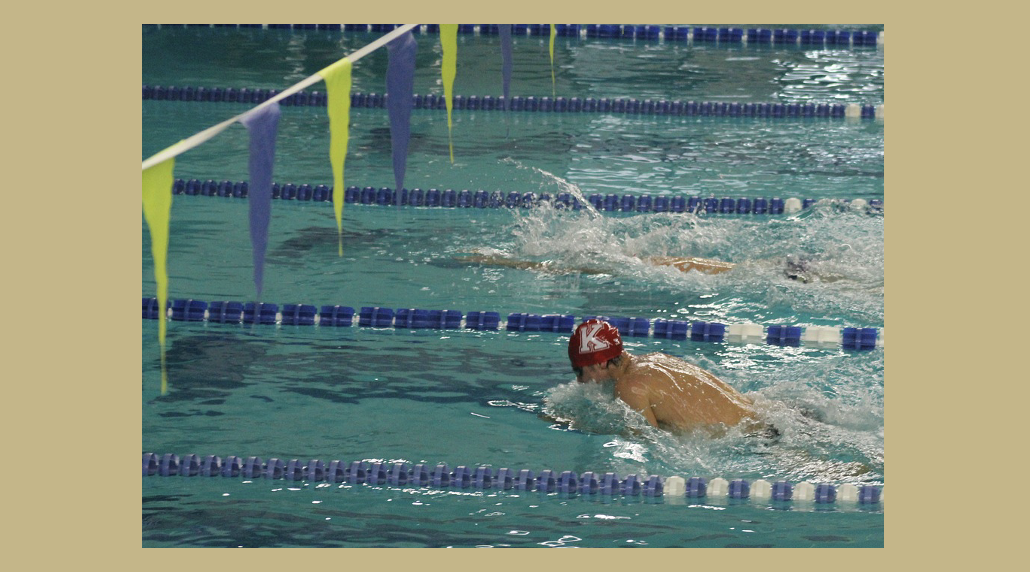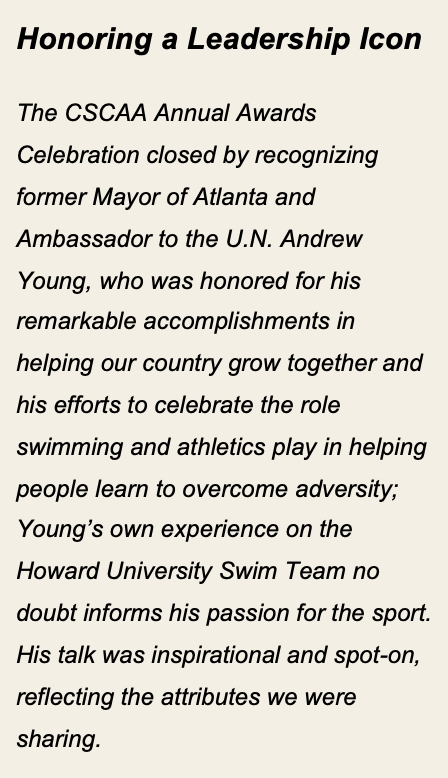How Can Leaders Help a Good Organizational Culture Grow?

The recent CSCAA Annual Meetings for college swim coaches were energizing and inspirational—here are some highlights.
Jim Richardson, former head coach of Women’s Swimming at University of Michigan, and I facilitated two sessions earlier this month at the College Swimming and Diving Coaches Association of America’s (CSCAA) Annual Meetings in Indianapolis. We spoke on the attributes of leaders who create sustainably successful teams. Two exemplary leaders, Executive Director Samantha Barany and COO Maureen Palchak, lead CSCAA, and these leadership attributes were obviously present in them and in the more than 300 coaches who came together to share and learn. We felt like we were preaching to the choir! Here are some highlights of our experience there.
Attributes of Leaders Who Create Sustainably Successful Teams in Action
In our CSCAA sessions, Jim and I promoted these research-supported leadership attributes:
- Curiosity
- Servant-Based Purpose
- Trust/Integrity
- Respect/Caring
Time and again, the coaches we encountered exemplified these attributes in many ways:
- The swim coaches obviously cared for one another, and they greeted each other warmly.
- Their mutual trust was apparent in the openness with which they shared any practices they thought might help their fellow coaches.
- Their curiosity to learn what others were doing and what the speakers had to say made the purpose of the Annual Meetings clear.
- And behind it all, you could see that they were there to give, to help others on their journey, and to live their mission as coaches responsible for their student-athletes.
 How to Propagate the Culture You Would Like to See
How to Propagate the Culture You Would Like to See
Our sessions surfaced a great question that many of you may have: When a small group exhibits the culture you would like to see more of, how do you encourage the rest of the team to do the same? Here are some of our suggestions:
- Recognize and celebrate the good you see when it happens; do not wait.
- Be specific about what behavior you are celebrating. Tie it to a well-defined Core Identity that includes a concise Purpose and a set of four or five Guiding Principles.
- Start your meetings with a story about what the team has looked like at its best recently, and describe what made that possible, again referencing your Guiding Principles by name.
- Close meetings with attendees expressing appreciation and gratitude. This challenges people to think about what has made the good they desire possible, and it puts their minds in better shape to excel.
- Celebrate those who exemplify your Guiding Principles regularly at larger meetings. Share the story of the exemplary behavior that the honoree demonstrated to earn such recognition.
For Peak Performance, Honor Your Organization’s Core Identity, Day In and Day Out
In their seminal book, Good to Great, Jim Collins and Jerry Porras shared their concept of the Flywheel Effect: Good-to-great transformations happen not because of a single innovation or well-designed program, but when we put our shoulders to flywheel daily, building momentum, and recognizing and honoring our Core Identity. In time, we may be able to skip a day, and the flywheel will still be spinning. But we cannot skip a week—the culture will lose its momentum. The discipline required to create a strong Core Identity is a requirement for Peak Performance. This takes time to become a habit, but as a client shared with us, “Now, we cannot imagine how you can make the best decision for the team any other way.”
Does your organization have what it takes to build the kind of discipline and commitment to enable Peak Performance?
#ShiftFromMeToTeam #Team #Leadership #GuidingPrinciples #CoreIdentity #CSCAA






